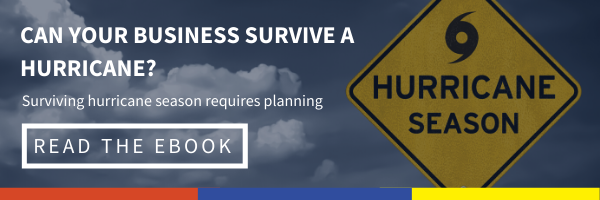Why You Need to Work With a Large Loss Recovery Partner Before Disaster Strikes
- Oct 29, 2019
Prepare your business before disaster strikes with these three tips, including a large loss recovery partner!
After a disaster, how long does it take to figure out if your business will survive?
According to FEMA, you’ll be able to tell in just 10 short days. If you can’t resume operations within that small time frame, you’re not likely to survive.
Business Continuity to the Rescue
The best way to get up and running before that 10-day period is up is with a business continuity plan. You know you need to develop your BC plan before disaster strikes to be successful in the aftermath, but that’s not all you need to do.
Tim Coumbe, VP – National Account Executive at Interstate Restoration came on the latest episode of The Continuity Forecast to talk about the 3 other things you need to do to prepare your company to survive disaster. He also gave us an inside look at what Interstate Restoration does to help their clients get their businesses up and running again after a disaster.

You can listen to the full podcast below, or keep reading to get the main points.
Get a Large Loss Recovery Partner
What does a restoration company do?
Interstate Restoration focuses on large loss mitigation for commercial accounts.
They’re mostly focused on helping clients prepare to recover after being hit by a large, catastrophic storm (like a hurricane).

So, from June to November (hurricane season), they’re working with clients on developing their response in preparation for these storms and mobilizing that response when storms do strike.
Large loss mitigation companies have two primary goals:
- To help you get your company up and running as soon as possible
- To control catastrophic damage to your property
Having a business continuity plan and loss recovery partner puts you on the right path for preparing your business to survive catastrophe.
But what are the other two things should you do to prepare before a storm or other disaster impacts your business?

Practice & Revise Your BC Plan
You never know when a catastrophe will strike your business. So, part of preparing ahead of time includes more than just developing your BC plan.
You also need to practice it and test it out.
Practicing your plan allows you to identify any necessary changes or revisions.
Plus, practicing your plan gives your employees an opportunity to understand how crucial the plan is to the success of the business. People step up to the plate during a drill when they understand the impact a real storm would have on the company’s bottom line.

So, drill your plan. And run it more than just once. That way, your plan is as polished as possible before an event takes place.
Build a Relationship with your Disaster Recovery Service Provider
Obviously, you’ll need to work with your restoration company to put together your BC plan.
But there’s two other reasons why developing a relationship with them should be on your to-do list when preparing for disaster.
For one, working with the company ahead of time helps develop trust. And that’s key to a speedy recovery following a catastrophic event.

Second, nailing down your plan ahead of time eliminates red tape, allowing your recovery partner can move quickly to help get you up and running again.
Get Prepared
Getting your business up and running after a disaster is crucial.
So, remember that success after an event begins with preparation before the event.
You can learn more about how to prepare your business continuity plan for hurricanes and other tropical storms by reading our free Business Continuity Tips for Hurricane Season ebook. This helpful resource is full of firsthand accounts from real professionals.
You can learn more about the guide and download it to read at your convenience by clicking the image below.
This blog post was taken from The Continuity Forecast podcast. We know business never stops. Check us out and leave a review!







